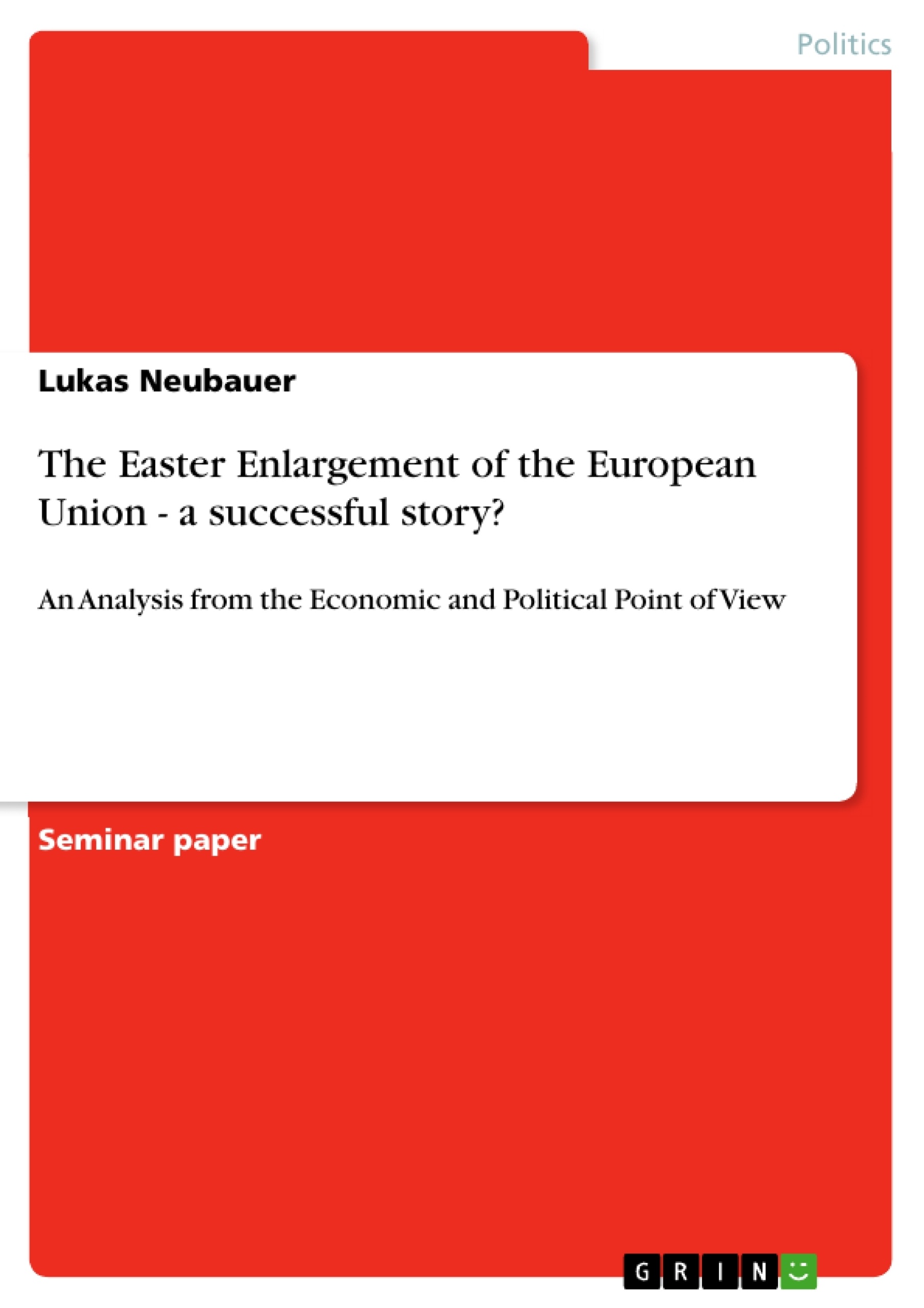Structure
1. Introduction – The Integrative Task of the EU
2. The Economic Perspective: A Win-Win-Situation
2.1 Perception of the Enlargement
2.2 The Convergence Process of the New Member States
2.3 The Four Fundamental Freedoms of the European Union
2.3.1 The Free Movement of Goods
2.3.2 The Free Movement of Services
2.3.3 The Free Movement of Person
2.3.4 The Free Movement of Capital
3. The Political Perspective: A necessary but tough Step?
3.1 The Historical and Ideological Point of View
3.2 The Impact on Domestic Policies
3.3 The Impact on Foreign Affairs
4. Conclusion
5. Bibliography
5.1 Monographs and articles from journals and collections
5.2 Online Publications
Structure
1. Introduction - The Integrative Task of the EU
2. The Economic Perspective: A Win-Win-Situation
2.1 Perception of the Enlargement
2.2 The Convergence Process of the New Member States
2.3 The Four Fundamental Freedoms of the European Union
2.3.1 The Free Movement of Goods
2.3.2 The Free Movement of Services
2.3.3 The Free Movement of Person
2.3.4 The Free Movement of Capital
3. The Political Perspective: A necessary but tough Step?
3.1 The Historical and Ideological Point of View
3.2 The Impact on Domestic Policies
3.3 The Impact on Foreign Affairs
4. Conclusion
5. Bibliography
5.1 Monographs and articles from journals and collections
5.2 Online Publications



